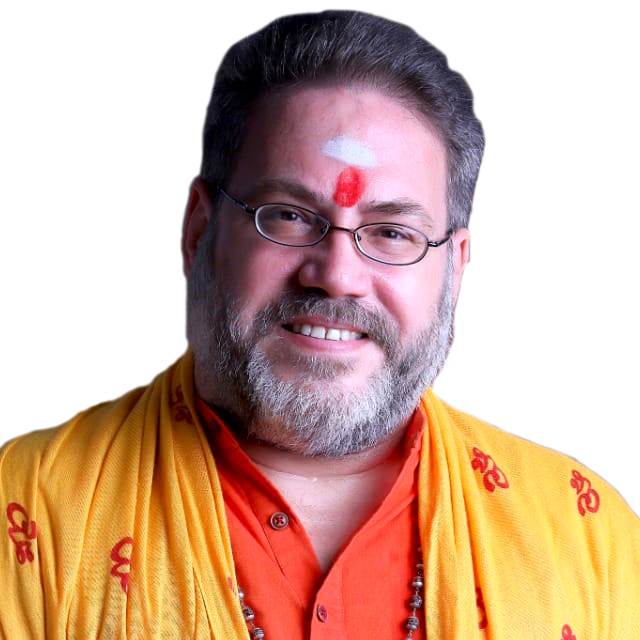Yoga Vidya Niketan (YVN), Member Institute of Indian Yoga Association successfully conducted its annual one-month Yoga Summer Course from May 1 to May 31, 2024. The course ran for one and a half hours daily across 41 physical centers around Mumbai and Navi Mumbai, extending…
Yogacharya Dr Ananda
Balayogi Bhavanani, Editor

In modern times we often hear terms like “Yoga and meditation”. This is really jarring to the a true spiritual seeker as Dhyanam or the state of meditation is truly the “Core of Yoga” itself.
Maharishi Patanjali is the codifier of the Yoga Darshana, the Yogic view of life. Dhyanam or meditation is preceded by Dharana, or one-pointed concentration that helps us to flow into the higher, inner state of meditation. Maharishi Patanjali defines Dharana or concentration as “desha bandhah chittasya dharana”, meaning thereby that concentration is the process of binding the consciousness to a point, place, region or object. This implies a duality between the seer and the seen. He further defines Dhyanam, or meditation, as “tatra pratyaya ekatanata dhyanam”, meaning thereby that that meditation is a state in which there is a steady and continuous flow of attention and concentration on a point, place, region or object. There ceases to be a duality between the “seer and the seen”. The final step in the three, free-flowing higher states of consciousness (Samyama) is Samadhi or union with the Divine nature in the ultimate, universal unification.

The one-pointedness of concentration, of Dharana raises the Yogi into the higher stages of the ideating mind, where Buddhi, or intellect, is available as an instrument of the Cosmic Mind. When free–flowing concentration is achieved, it is known as Dhyanam, or meditation. Meditation is not “thinking,” as so many today often mistake it to be. Meditation is a transcendental state, where if there is awareness, it is awareness of awareness itself, a state beyond the mind.

Meditation is the fruit of long and arduous effort. The mind is so trained in its focus that it naturally flows into the object of contemplation. A deep, vibrant quietness is the characteristic of meditation, which infuses one’s entire lifestyle with calmness and control. Meditation becomes a quality of mind that manifests in all aspects of our daily life. The mind develops the capacity to delve into every experience, thought, emotion and situation that arises, and this focused awareness produces Yogic skill in living.

Let us know understand a beautiful practice of Dhyanam based on the Pranava.

Pranava Dhyanam
This practice is a one pointed concentration on the form and Nada, or sound, of the sacred Pranava AUM, known as the Mantra of all Mantras. This can be done from any of the sitting postures but make sure that your back is erect. It is best to do this after performing a few rounds of conscious deep breathing so that the mind is in a calm state. Pranava Dhyanam harmonizes the body, emotions and mind. In this practice emphasis is first placed on making the sounds AAA, UUU and MMM separately and then in combination. This is followed by the performance of the practice mentally without the audible sound. Sit in Vajrasana and place the Chin Mudra on your thighs. Breathe in deeply into your lower chest area 2-3-4-5-6. Breathe out with the sound, Aaaaa, Breathe in 2-3-4-5-6. Breathe out with the sound, Aaaaa. Breathe in 2-3-4-5-6. Breathe out with the sound, Aaaaa. Now concentrate on the sound, Aaaaa mentally and perform the same practice 3 times without the audible sound.
Curl your fingers inward to form the
Chinmaya Mudra and place it on your thighs. Breathe deeply into your mid chest region 2-3-4-5-6. Breathe out with the sound Ooooo. Breathe in 2-3-4-5-6. Breathe out with the sound, Ooooo. Breathe in 2-3-4-5-6. Breathe out with the sound, Ooooo. Now concentrate on the sound, Ooooo, mentally and perform the same practice 3 times without the audible sound. Perform the Adhi Mudra by clenching your fists with your thumbs in the center and place the mudra on your thighs. Breathe deeply into your upper chest and clavicle regions 2-3-4-5-6. Now, exhale with the sound,Mmmm. Breathe in 2-3-4-5-6. Breathe out with the sound,Mmmm. Breathe in 2-3-4-5-6. Breathe out with the sound,Mmmm. Now concentrate on the sound mentally and perform the same practice 3 times without the audible sound.
To perform the 4th part of the practice that unites the 3 earlier parts, perform Adhi Mudra and then place it with the knuckles of both hands touching in front of the navel. This is now known as the Brahma Mudra. Take a deep breath into the low, mid and upper chest regions. Now let the breath out with the sounds of Aaaaa—Ooo—Mmmm. Breathe in 2-3-4-5-6. Breathe out Aaaaa—Ooo—Mmmm. Breathe in 2-3-4-5-6. Breathe out

Aaaaa—Ooo—Mmmm. Now concentrate on the sound Aaaaa—Ooooo—Mmmm and perform the same practice 3 times without the audible sound.
A practice of 3 to 9 rounds of the Pranava Dharana, when done daily, helps to relax the body-mind-emotion complex and provides complete healing through the production of healing vibrations at all levels of our existence. This is the cornerstone of Yogic breath therapy and can produce health and wellbeing for all. When the concentrative aspect of the practice is taken to its peak, a state of meditation, or Pranava Dhyanam, can ensue.

















